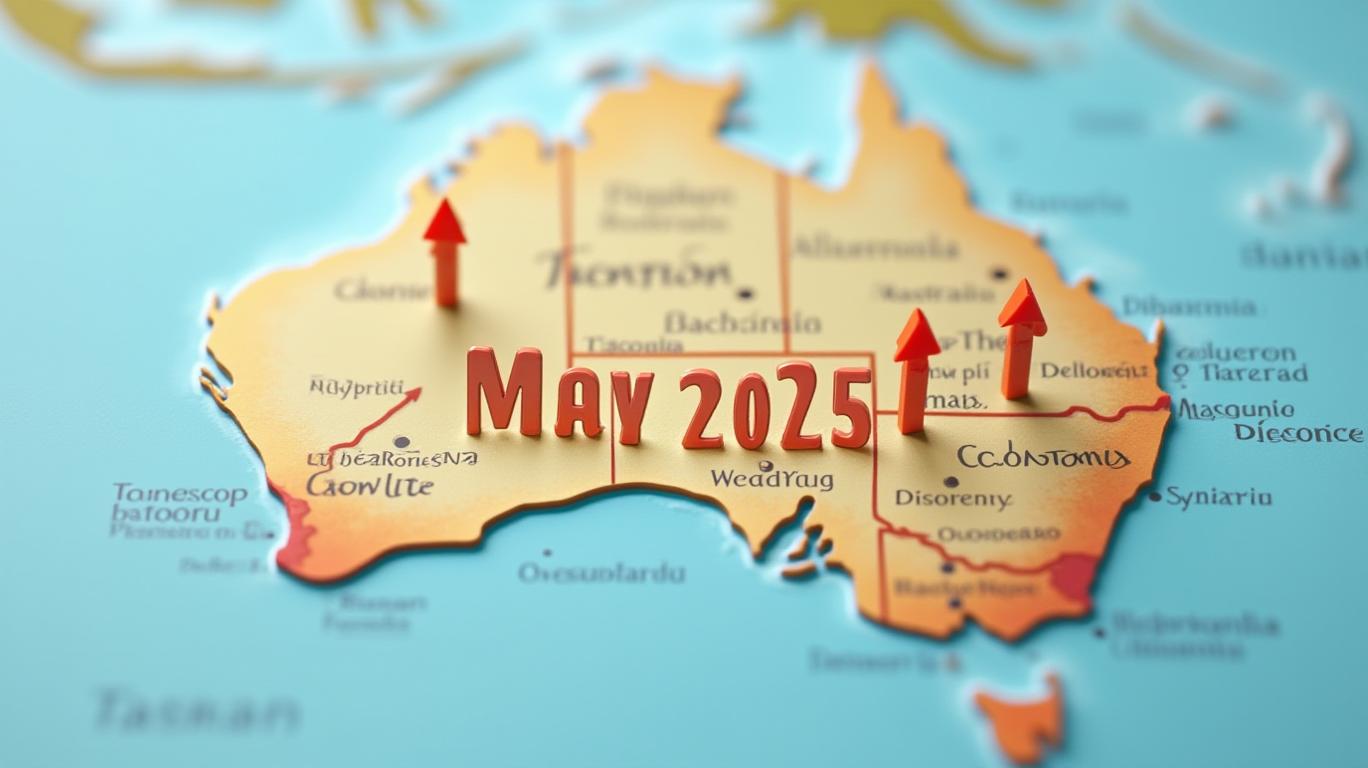Australian Consumer Resilience: Navigating Discretionary Slump and Regional Divergence Amid RBA Rate Cuts
The Reserve Bank of Australia’s (RBA) anticipated rate cut in May 2025 is not just a monetary policy shift—it’s a catalyst for sector rotation and regional reallocation. With inflation within target range and consumer spending patterns diverging sharply, investors must pivot toward sectors and states positioned to thrive as borrowing costs ease. Here’s how to navigate the landscape.

The Rate Cut Catalyst: A New Era of Consumer Behavior
The RBA’s expected 50-basis-point cut to 3.6% (from 4.1%) will alleviate mortgage pressures, which have surged by 163% since mid-2022 for employee households. This relief will rebalance spending toward essentials, not luxuries. .
While hospitality and recreation stocks face headwinds from weak retail data (March quarter retail sales flat, non-food spending down 0.2%), sectors tied to home ownership and necessity are primed to outperform. Utilities, education, and insurance—critical to households and businesses—will benefit as consumers prioritize stability over discretionary splurges.
Sector Rotation: From Discretionary to Essentials
Underweight Hospitality & Recreation:
- Weak retail data and stagnant consumer confidence signal prolonged underperformance.
- .
Overweight Utilities, Education, and Insurance:
- Utilities: Rate cuts reduce borrowing costs for infrastructure projects. Look to Synergy Energy (SYN) and Infigen Energy (IFN), which benefit from renewable energy demand and grid investments.
- Education: Tertiary enrollments rose 4.2% in 2024 as workforce upskilling accelerates. Navitas (NVT) and Torrens Education (TNE) are well-positioned for growth.
- Insurance: Home ownership-linked insurers like QBE (QBE) and IAG (IAG) gain as mortgage affordability improves, boosting policy demand.
State-Specific Equity Plays: Tasmania and NSW Lead the Charge
Geographic divergence is stark: Tasmania and NSW outperform lagging regions like Queensland and Western Australia.
Tasmania:
- Why Invest: Strong annual GDP growth (+3.8% in 2024 vs. national average of 2.1%), driven by tourism recovery and renewable energy projects.
- Top Stocks: Cleanaway Waste Management (CLW) (waste-to-energy projects in Hobart) and Bass Strait Energy (BSE) (offshore gas reserves).
New South Wales:
- Why Invest: Sydney’s tech hub and infrastructure boom (e.g., metro rail extensions) attract capital. NSW’s 2024 GDP grew 2.9%, buoyed by education and professional services.
- Top Stocks: Mirvac (MVC) (property developer with a focus on Sydney’s innovation districts) and AMP Limited (AMP) (wealth management firm benefiting from NSW’s affluent households).
.
Actionable Investment Strategies
- Short-Term Plays:
- Buy utilities and education stocks ahead of the RBA’s May meeting. Rate cuts will amplify their defensive appeal.
Sell hospitality stocks like Accor Australasia (ACR) and Scentre Group (SCG), which face prolonged demand headwinds.
Long-Term Opportunities:
- Tasmania’s renewable energy sector: Back Bass Strait Energy (BSE) for its role in Australia’s energy transition.
NSW’s tech infrastructure: Invest in Mirvac (MVC) for exposure to Sydney’s innovation corridor.
Hedging Risks:
- Use QBE (QBE) insurance stocks as a buffer against economic uncertainty. Their stable cash flows align with rate-cut-driven stability.
Conclusion: Act Now—The Clock Is Ticking
The RBA’s May decision is a clarion call for investors to pivot toward essentials and high-growth states. With rate cuts all but certain, those who underweight discretionary sectors and overweight Tasmania/NSW equities will capture the next phase of Australian resilience. Delaying this shift risks missing the upside—and bearing the downside of a sector rotation already underway.
The time to act is now. The data is clear, the sectors are defined, and the regions are ripe for growth. Position your portfolio accordingly.


Comments
No comments yet